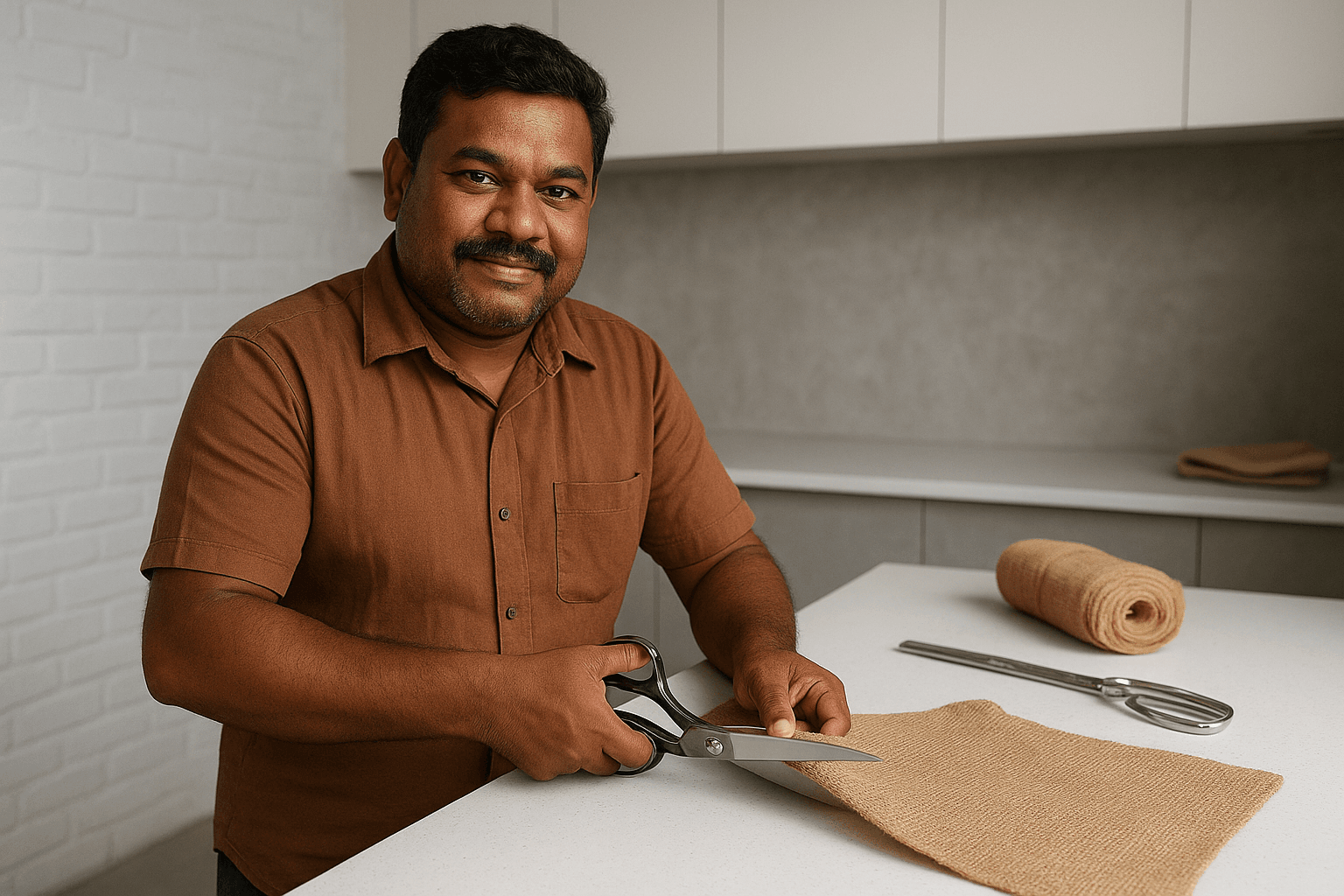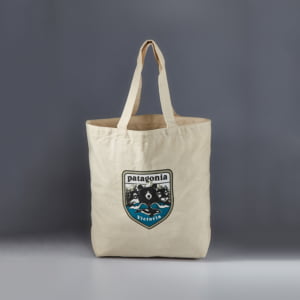Raw jute has a smell that is both woody and green, and it is definitely natural.
We grew up with that smell at Bombay Bags. That was it. No talk of ecology, branding, or anything else. Just the smell of home and hard work. If you want to buy a lot of jute tote bags for your grocery store, store, or as brand giveaways, you need to find a mix between three things: quality, ethics, and dependability. It’s not a brochure. This is what we know from years of weaving, printing, cutting, gluing, and sometimes messing up batches before we got it right.
1. Why jute tote bags are still useful
Each business has a “moment of reckoning.” For packing, that time came when people stopped taking plastic bags. Jute didn’t just fill the need; it changed what it means to be accountable. A good jute bag, which is usually between 280 and 320 GSM, feels heavy and has a rough feel on your palm that tells you that it came from soil and not oil. It doesn’t need a lot of water to grow like cotton does. It doesn’t sit in a waste for hundreds of years like polypropylene does. But environmental concerns aren’t the only reason stores are changing. Its picture. There’s a silent message that says, “We’re not cheaping out” when your logo is printed on a clean, well-made jute bag.
2. What Does a Good Jute Bag Really Have?
Everyone who is new to our business sends us samples and says, “We tried another supplier’s bags, they looked fine, but they fell apart.” Most of the time, one of three things is to blame: the weave was too loose (less than 9×9 threads per inch), the handle stitching stopped a few millimeters short, or the cheap plastic on the inside cracked.
Before you sign, here’s what you should really check:
- Fabric weight: 280-320 GSM jute works well for everyday shopping bags. More weight (up to 350 GSM) is better for wine or food loads.
- Keep the weave even: Look for clean selvedges and threads that are spaced evenly. Over time, loose weaves fall apart.
- Laminating: food-grade LDPE (if you need to make it waterproof) or an eco-friendly layer made from natural starch. Stay away from PVC.
- Handles: Fashion shops should use soft cotton tape handles. For grocery shopping, choose 16mm knotted jute or rope-style handles that are stitched with a “X” pattern across the top. For grocery stores it is very important to consider shorter handles so that the bags dont dangle like pendulum if people hold them in hands.
- Thread: 10- to 12-stitch 3-ply cotton or polyester thread; this is what stops seams from fraying.
One thing about a bag is only as strong as its weaker part. People have taught us this the hard way, usually after their 10 kg food haul tore right through a “budget” bag.
3. What Customization Is Really Worth
To print on jute is an art in and of itself. The threads don’t soak up ink evenly, so the surface isn’t smooth like paper or fabric. That’s why we try and pre-press every new color mix.
We mostly use silk-screen printing because it gives us bold, slightly textured results that don’t fade in the rain or when people handle them. Though it costs more per piece, heat-transfer printing is good for logos that are very small. We’ve made bags with earthy greens and muted tones for small organic shops in Toronto, as well as bags with deep black prints and subtle gold foil for small wine brands. The important thing is to work with the material instead of against it.
It’s not about ego to customize; it’s about remembering things. That’s a brand image you didn’t pay extra for when someone brings your bag to the market three weeks later.
4. How to Choose a Supplier You Can Trust
To be honest, there are a lot of jute sellers who will use the words “eco” and “premium” together and then send you something that smells like kerosene. There aren’t as many real ones.
To check out a company, you should ask for:
- Proof that they are a GSM from their cloth mill.
- Take care of load test reports It should be able to handle a 10 kg load for 60 seconds without breaking.
- Tolerance specs: A real company will tell you right away if the size is off by ±5 mm or the GSM is off by ±5%.
- Pictures of how they set up to stitch. An office that makes 200 bags a day is different from a plant that makes 5,000.
- Lead times. If they’re making everything from scratch, anything less than 20 days for bulk is not possible. Usually, it takes 25-35 days to make something and another 6-7 weeks to ship it by sea to Canada. It’s not quick fashion. It’s made with care.
5. Why buying in bulk makes sense (if you plan well)
You can only buy in bulk if you’re sure of your idea and trust your supplier. It’s easy to see that the price drop between 500 and 2,000 units can be as much as 25-25%. But the secret benefit is that it is always the same.
The color of the jute batch, the tightness of the handle roll, and even the gloss of the lamination change a little from one lot to the next. This is fixed when you order in bulk. For test runs, most of our retail customers start with MOQ 300-500. After that, they increase the number of pieces per order to 2,000 to 3,000, mostly for summer or Christmas sales. Not as many packages also mean fewer emissions, which is good for the environment. Okay, but really? Our customers love that they won’t run out of bags in the middle of the season.
6. Do not fall into these traps (We also make them)
People who are good at their jobs have bad days, too. We’ve had colors bleed because the humidity of the rainy season changed how a new dye lot worked. We’ve had stitching machines get a little out of whack and mess up the line of the handles. How fast you catch it makes a difference.
Don’t do these things: • Skip the pre-production sample. Always give your OK before the full run.
- Ordering during holiday season (August to October in India) without extra time to wait slows down production everywhere.
- Letting marketing win over common sense. It looks cool to use matte black ink, but it breaks more easily on rough jute.
- Not controlling the moisture in storage. Jute soaks up moisture, so bags that have been wet for weeks will smell.
It’s not about being perfect in manufacturing; it’s about finding mistakes before they get to you.
7. From the thought to the pack: How It Really Goes
From our end, this is what a real order looks like:
- First brief: You send us your artwork, as well as the bag size, number, and due date.
- We work with you to get the digital bag mockup to its approval
- Samples: We print one bag (not an image) and send it by courier for approval, which takes about 10 days.
- Final approval: Once everything is okay, we start making a lot of them.
- QC in the middle of production: Every 500 units, we pick samples at random.
- The bags are packed in a 5-ply master carton that is identified with the size and weight of each bag.
- Ship: by sea or air, based on how quickly you need it. We show you both choices and the difference in cost right away. Door-to-door wait time is usually between 15 and 75 days. It could be short or long, but it will always be clear from the start so we can still be friends after everything is over.
8. Making a connection that lasts longer than one order
We’ve worked with some shops for so long that we can tell when they’re going to change their style. That’s just right. It wasn’t a deal; it was a flow. Working with jute takes a long time. It’s not even with the fibers, the temperature is important, and the human touch is important. It shows if you rush it.
That’s us if you want a seller who will tell you the truth, even if it means you have to wait an extra week. Our name is Bombay Bags. We make tote bags that aren’t perfect, but they last, look good, and carry your brand like a well-made tool in the hand of someone you trust.








